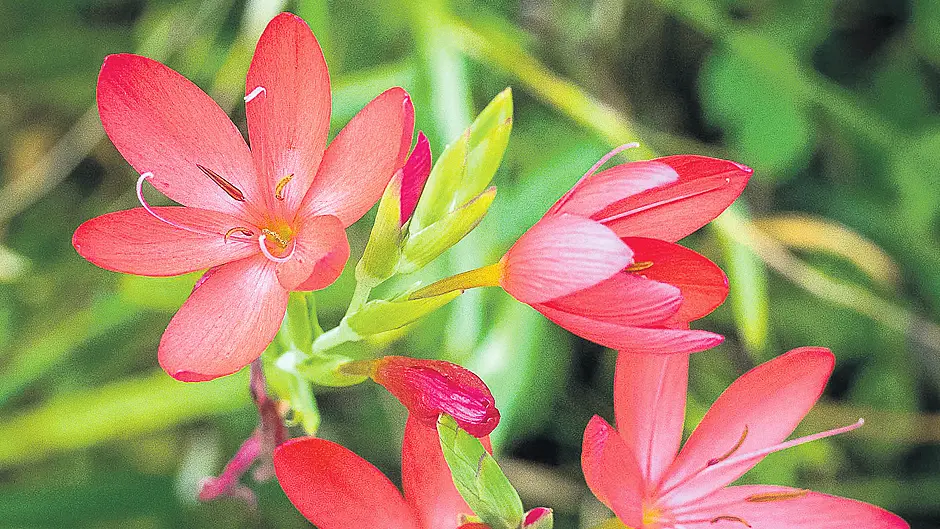By Joyce Russell
IT’S time to wrap up well on a fine day and start the slow and steady business of pruning fruit trees, bushes, and some ornamental shrubs. Try not to walk on wet soil and try not to create muddy routes across lawns. Make sure pruning tools are sharp and that they can reach high enough that you don’t damage yourself or the tree.
A couple of tips
Check the forecast before you start and avoid pruning if hard frosts are due to settle in. Severe frosts can lead to die back behind a fresh cut. Some people leave pruning until February because of this, but really we can get as many frosts at the start of the year as we can at the end. I find that it’s good to get going and not to feel rushed. If we get a mild winter then frost may not do any damage.
If the sun is too bright to look up into high branches, you can turn your back to the sun and prune what you can. Return later in the day to prune the rest when the sun has moved around.
Look online or read in a book about the best way to prune each tree or bush. There’s too much specific information to include here, so if you don’t already have a method for pruning an apple tree, then it’s best to find out as much as you can before you start to make cuts.
Fruit bushes and canes
Raspberry canes that fruited in the summer should be cut down to a few centimetres above ground level.
Tie new canes into support wires so they don’t snap in the wind – these new canes are the ones that will fruit next summer. Autumn fruiting varieties may still have a scatter of berries to enjoy and plenty of leaf. These canes will be cut down in January or February and new canes push up in the spring to bear fruit next autumn.
Blackcurrants fruit on the new wood that grew this year. Cut old branches as low as you can and always so a new strong bud is left to produce a new fruiting shoot.
If redcurrant bushes fruited well this year, you can get away for one year with just nipping off tops to keep bushes to the size and shape that you want. You should follow more specific pruning if you have plenty of time and want to prune to get more fruit.
Fruit trees
Don’t prune plum, damson, cherry, apricot and peach trees in the winter. Summer pruning reduces the risk of silver leaf disease.
Most apples can be pruned in the winter, but strong growing ones like Bramley should only be summer pruned. The exception to this is if trees show signs of canker or other diseases of branches and trunk. It’s much easier to see this when trees are bare so take a good look around.
Cut out any obvious sign of canker so it doesn’t spread to other healthy parts. Find out about pruning apple and pear trees and choose a method that suits you. There are different variations, but all can come to the same results. Always prune to maximise fruit. Try to keep the tree open and of a reasonable size and shape for your garden.
Plant out peas
If you sowed peas in tubs a few weeks back, then these will be tall enough to have filled pots with roots and be ready for planting out. You get the earliest crops when growing on in a polytunnel or greenhouse, but they also do well if planted outdoors under a protective cloche. A cloche made from horticultural fleece, or a clear woven fabric, is often a good choice. This allows moisture to penetrate and air to circulate.
Dig out a trench along the row and half fill this with compost. You can use compost from the garden heap and it will help provide nutrients and moisture around the roots of growing plants. Fill the trench with soil and level off. You can tip young pea plants out of their pots or tubs and plant the rootball into the loose soil. Firm in with your hands so the young plants are standing steady and scatter a little hydrated lime along the row if your soil is acidic. You may need to use organic slug pellets to protect small plants, although these pests shouldn’t be too active at this time of year.
Kaffir lily
This plant can be a star of winter flower borders. There’s still plenty of colour from the flower spikes and new flowers open as lower ones fall. It is very easy to grow and puts up with plenty of neglect. With luck it will keep flowering into the New Year.
You can divide clumps in the spring to create more patches of winter colour.







